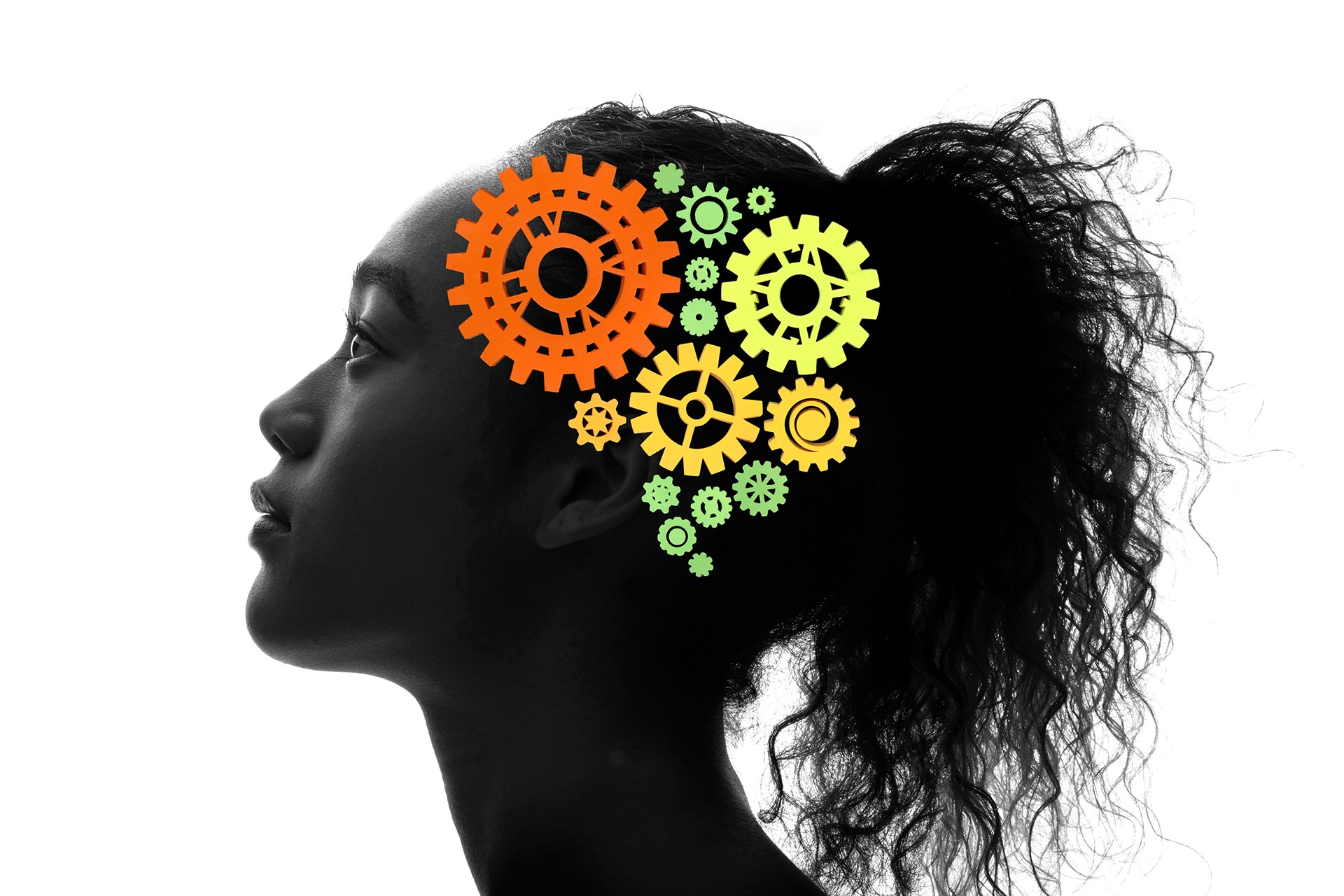Breaking the Mold
The LaFetra College of Education's Center for Neurodiversity, Learning, and Wellness is supporting student success one heart and one mind at a time.
November 19, 2019
The text below will scramble to simulate reading text for a person with dyslexia. As you scroll down the page the text will unscramble.
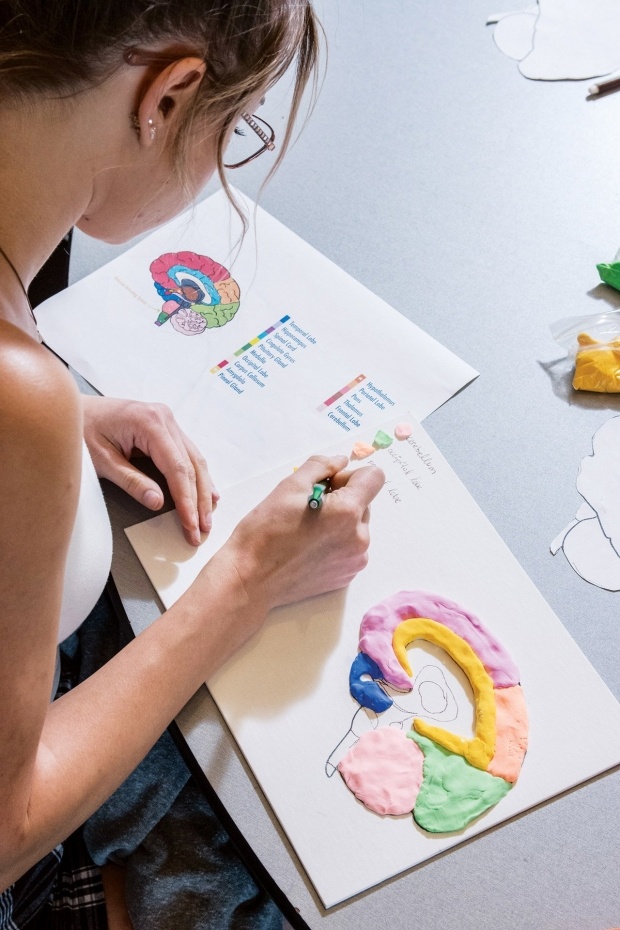
The center is advancing this work through initiatives to train educators on best practices in serving neurodivergent learners, provide tutoring and support for students at all levels, and create a pipeline for the next generation of highly-skilled teachers.
Clinical Professor Niki Elliott, co-director of the CNLW, says the stories we are told about how our brains function play an integral role in how we approach the process of teaching and learning.
“Regardless of the labels that are assigned to certain students, such as those with ADHD, autism, or dyslexia, they are all diverse individuals with the capability to strengthen their unique talents,” Elliott said. “Understanding this diversity begins by pulling back the layers and diving deeper into how the mind functions.”
If teachers understand more about the brain, the nervous system, neurodiversity, and the role of trauma and stress in students’ brain development, they will see themselves differently, and treat students differently, Elliott said.
“It is this understanding that will be reflected in the classroom with more inclusive and affirming teaching practices,” she said.
Neurological Diversity
The CNLW was founded by Professor Patricia Taylor in 2017 as part of a broader re-envisioning of the LaFetra College of Education. The center serves as a multi-faceted program of educational services, professional training, research, and community engagement.
From the beginning, its mission has been to promote a greater understanding of neurological diversity. Today, that goal is furthered by the drive to equip neurodivergent learners with the essential skills to thrive in a learning environment.
One avenue for advancing this mission is the Genius Project, which prepares incoming college students who have documented learning differences to thrive in an academically rigorous setting.
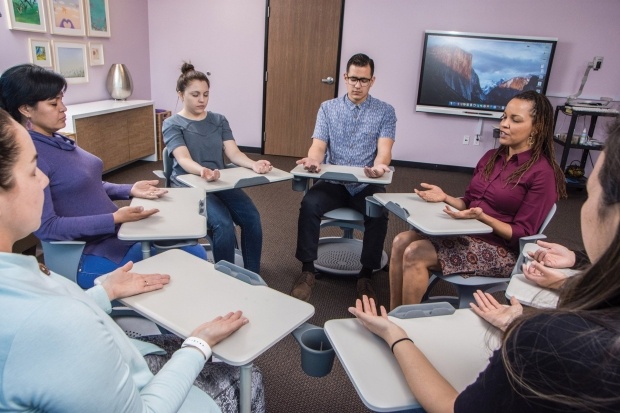
The Genius Project kicked off this past summer with a three-day residential intensive for seven incoming students. They practiced mindfulness, honed their organizational skills, and engaged with assistive technology including textbooks on tape and Irlen sheets (color filters for reading). Participants discovered how their neurodivergence is a strength rather than a deficit. This shift in perspective was a game changer for them.
“Our goal has always been to help individuals find their talents, actualize them, and learn to advocate for themselves,” Taylor said.
One of those students, Mackay MorganArmstrong, is diagnosed with ADHD, anxiety, and depression. She said her mind often wanders and she is easily distracted, but the Genius Project experience helped her with techniques to refocus.
“We learned about the brain and the role of the vagus nerve,” she said, “and how we can use breathing techniques and visualization to help calm ourselves in stressful situations.”
Having identified her genius as optimism and perseverance, she wants to use mindfulness to spin negativity into positive thinking and to remember that overcoming obstacles has always made her stronger.
To ensure the efficacy of the Genius Project, Taylor designed it with a team of students and staff who have first-hand experience with learning differences.
“Critical to everything we do in the center is that we’re not telling people with neurodivergence about themselves,” she said. “We are doing things so that they can tell us about themselves.”
Taylor hopes the Genius Project will spawn a club or a self-help group at the university when this year’s participants become mentors for neurodivergent students arriving in 2020.
Throughout the academic year, students in the Genius Project will meet with Taylor for continued mindfulness training and support.
Disrupt the Narrative
The CNLW’s influence is expanding beyond the University of La Verne campus.
Earlier this year, in partnership with the San Bernardino City Unified School district (SBCUSD), it launched a district-funded, year-long training program that offers educators from the district a certificate in neurodiversity and inclusion.
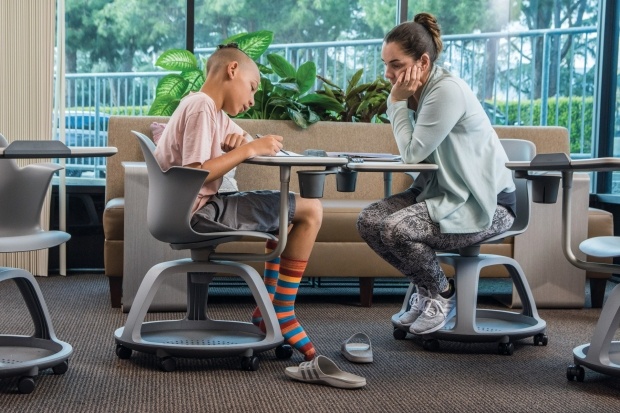
Structured as a mix of residential immersions, on-campus one-day classes, and online sessions, it blends practical strategies with a theoretical understanding of current research. Teachers learn how the brain and neurosystem work in order to understand how trauma, PTSD, and extreme stress can impact the brain’s ability to process new information. Ultimately, they are learning to create a safe, nondistracting, and inclusive learning environment.
At one class session, more than 30 educators from across the district took part in a brain science and mindfulness training led by Elliott. Each participant drew an outline of a human brain onto a piece of cardboard. They then used colored modeling clay to fill in each section of the brain. In the end, no two brains were alike.
“Our goal is to disrupt the narrative that has been told too often, that some students have brains that are incapable of learning as well as others,” Elliott said. “Instead, we aim to help teachers create inclusive and accessible learning spaces in which educators and students practice strategies that keep their brains and nervous systems engaged and ready to learn.”
Special education instructor Yessell Reyna said the mindfulness training taught her how to manage her own trauma and appropriately respond to challenging classroom situations.
“I know now that no learning can take place if the amygdala is being hijacked,” said Reyna, referring to the part of the brain that processes emotions.
During the fall semester, the district’s administrative leaders, including principals, vice principals, and superintendents, participated in a three-day residential Mindful Leaders Conference. They learned how to apply concepts in interpersonal neurobiology and mindfulness in order to support healthy brain management for themselves.
They were also guided in applying the lessons to how they manage their schools and support teachers in understanding the development of all students, especially those who have learning differences or have been impacted by trauma.
Support for All
Under new state guidelines, California schools are expected to address dyslexia systematically. However, few teachers possess the skills to do so, and the immediate needs of many students are going unmet, according to Amber Bechard, associate director of literacy and outreach at the CNLW.
To help close those gaps, the CNLW has opened a Dyslexia Reading Clinic that will be a regional hub for teacher training, community tutoring, and professional development workshops. The clinic builds on the center’s established Literacy Center, which provides no-cost tutoring to struggling readers as part of required fieldwork for all LaFetra College of Education special education teacher-candidates.
The center is developing educators through a train-the-trainer program that provides a pipeline of local teachers skilled in best practices in dyslexia tutoring.
“We’re trying to fill a gap to provide structured support for teachers who can then support children in their classrooms,” Bechard said.
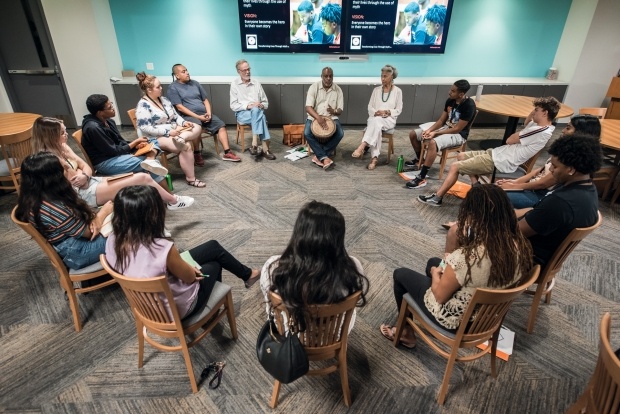
The system is built around Multisensory Structured Language (MSL) support. The highly-customized technique is designed to get children to hear, see, talk, and move in carefully crafted activities that link the sight, sound, and feel of spoken language to the printed language on the page.
The effectiveness of the system is evident in the clinic’s work tutoring local children.
Drew Haslett, an 8-year-old second grader from La Verne Heights Elementary School, meets with Bechard twice a week for a variety of reading lessons. Drew is one of four children in the dyslexia tutoring pilot program that was introduced last spring.
During a recent session, he recited a formula, tracing vowel patterns of words three times with his fingertip on a flash card, and again, three times on his desk.
“Eyes, ears, voices, and hands must work together for conscious organization and retention of language patterns.”
“A-W is ‘awe,’” he said. “A-U is ‘awe.’”
Bechard segues to a listening activity. As she reads a list of words (“saw, law, ounce, dawn, raw, soy, yawn, hawk”), Drew signals thumbs-up when he hears the “awe” sound.
“Eyes, ears, voices, and hands must work together for conscious organization and retention of language patterns,” Bechard said.
After a semester of tutoring, Drew’s word attack skills shot up from grade K.9 to grade 2.8 — that is 19 months’ worth of reading progress in four months.
Bechard couldn’t be happier.
“At CNLW, we’re impacting people’s lives in incredible ways,” she said. “This is only the beginning.”
